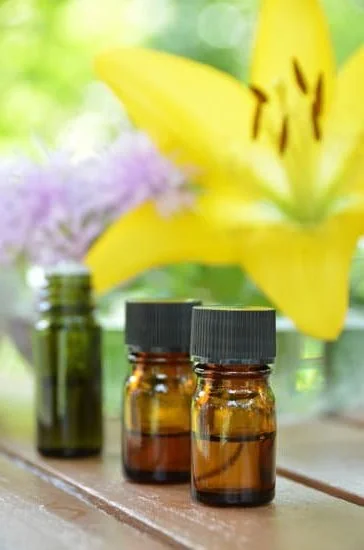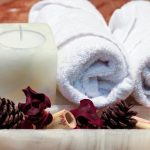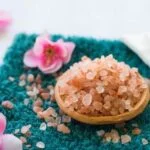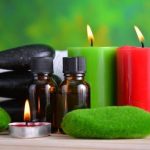Aromatherapy, a holistic approach to health and wellness, has gained significant popularity in recent years. This ancient practice utilizes the therapeutic properties of essential oils derived from plants to promote physical and mental well-being.
At the heart of this practice is the essential oil diffuser, a device that plays a crucial role in dispersing these aromatic oils into the air for easy inhalation and absorption. In this article, we will dive into the world of aromatherapy essential oil diffusers and explore their history, benefits, types, working mechanisms, maintenance tips, and more.
Aromatherapy has been used for centuries across various cultures as a means to restore balance and enhance overall health. The practice involves inhaling or applying essential oils topically to stimulate the olfactory system and influence emotional and physical responses. With an increasing focus on holistic well-being and natural remedies, aromatherapy has captured the attention of individuals seeking alternative approaches to healing.
To fully understand aromatherapy’s impact on our well-being, it is important to grasp how essential oil diffusers play a pivotal role in this practice. An essential oil diffuser is a device designed specifically for dispersing essential oils into the air.
It allows for controlled diffusion of these concentrated plant extracts, filling your living space with their delightful fragrances while releasing their therapeutic properties simultaneously. By using an aromatherapy essential oil diffuser effectively, one can harness the power of nature’s essences conveniently from within their own home or workspace.
In the following sections of this article, we will journey through aromatherapy’s fascinating history, explore its numerous benefits both for physical and mental health, delve deeper into what an essential oil diffuser is exactly and how it functions within aromatherapy practices. We will also take a closer look at different types of diffusers available in the market today and guide you through choosing the right one that suits your needs.
Join us as we embark on this aromatic adventure to discover the transformative potential of aromatherapy essential oil diffusers.
History of Aromatherapy
Aromatherapy has a rich history that dates back thousands of years. In fact, the use of essential oils for therapeutic purposes can be traced back to ancient civilizations such as Egypt, China, and India. These early cultures recognized the power of plant extracts in promoting physical and mental well-being.
Ancient Egyptian Aromatherapy
One of the oldest known systems of aromatherapy was practiced by the ancient Egyptians. They used aromatic plants and their oils for various purposes, including religious rituals, embalming, and cosmetics. Essential oils were highly valued and were often used by pharaohs and priests for their medicinal properties. The Egyptians believed that these oils had the ability to protect against evil spirits and promote spiritual healing.
Traditional Chinese Medicine
Aromatherapy also has roots in traditional Chinese medicine, which dates back over 2,500 years. Chinese healers used aromatic herbs and oils to treat various ailments and restore balance in the body’s energy pathways, known as meridians. Some common herbs used in Chinese aromatherapy include lavender, ginger, and frankincense.
Ayurvedic Medicine in India
In Ayurvedic medicine, an ancient healing system originating from India, aromatic herbs and oils have been used for thousands of years to promote holistic well-being. Ayurveda recognizes the unique properties of each essential oil and uses them accordingly to balance the body’s doshas (energies). Commonly used essential oils in Ayurvedic aromatherapy include sandalwood, jasmine, and rosemary.
The historical use of essential oils in these ancient civilizations laid the groundwork for modern-day aromatherapy practices. Today, aromatherapy continues to gain popularity as people seek natural alternatives for supporting their physical health and emotional well-being. The knowledge passed down through generations has contributed to our understanding of how essential oils can be effectively used in various therapeutic applications.
Benefits of Aromatherapy
Aromatherapy has gained significant popularity in recent years due to its numerous physical and mental health benefits. Using essential oils extracted from plants, aromatherapy utilizes their aromatic compounds to promote physical well-being and enhance emotional and mental balance. The therapeutic properties of essential oils can be experienced through various methods, including inhalation, massage, and topical application.
One of the key benefits of aromatherapy is its ability to reduce stress and anxiety. Certain essential oils, such as lavender and chamomile, have calming properties that help relax the mind and promote a sense of tranquility. Inhaling these oils through an essential oil diffuser can create a soothing environment and help alleviate feelings of tension.
In addition to stress relief, aromatherapy also offers benefits for sleep improvement. Essential oils like vetiver, sandalwood, or bergamot can be used before bedtime to create a peaceful atmosphere in the bedroom. Diffusing these oils in an essential oil diffuser can aid relaxation and promote a restful night’s sleep.
Furthermore, aromatherapy has been shown to have positive effects on mood enhancement and overall emotional well-being. Essential oils like citrusy bergamot or floral jasmine are known for their uplifting qualities that can boost mood and increase positivity. Diffusing these oils throughout the day can create a pleasant environment that fosters emotional balance.
Overall, the use of an aromatherapy essential oil diffuser provides numerous physical and mental health benefits. From reducing stress and anxiety to promoting better sleep and enhancing mood, the therapeutic properties of essential oils can greatly contribute to overall well-being. By incorporating aromatherapy into daily routines through diffusion with an essential oil diffuser, individuals can experience the transformative effects of this natural healing practice.
What is an Essential Oil Diffuser
An essential oil diffuser is a device that is used to disperse the aroma and therapeutic properties of essential oils into the air. It plays a significant role in aromatherapy, which is a holistic healing practice that utilizes natural plant extracts, known as essential oils, to promote physical and mental well-being. Aromatherapy has gained significant popularity in recent years as people seek alternative methods to improve their health and enhance their overall well-being.
The main purpose of an essential oil diffuser is to create a pleasant and soothing environment by filling the air with the scent of essential oils. When these oils are inhaled, they stimulate the olfactory system, which is connected to the limbic system in our brain.
The limbic system plays a crucial role in regulating emotions, memories, and behaviors. Therefore, by inhaling the aroma of specific essential oils, we can influence our mood, reduce stress levels, promote relaxation, and even boost cognitive function.
In addition to creating a pleasant ambiance and providing emotional support, an essential oil diffuser also serves as an effective method for reaping the physical benefits of aromatherapy. Essential oils contain powerful natural compounds that possess various therapeutic properties such as antibacterial, antiviral, anti-inflammatory, analgesic (pain-relieving), and immune-boosting effects.
By dispersing these oils into the air through a diffuser, we can easily access their benefits and experience improved respiratory health, enhanced focus and concentration, relief from headaches or migraines, better sleep quality, strengthened immune system response, reduced inflammation and pain levels in the body.
Overall, an essential oil diffuser is an indispensable tool for anyone interested in practicing aromatherapy for their well-being. It allows you to enjoy the numerous benefits of essential oils effortlessly while creating a tranquil atmosphere conducive to relaxation and healing.
Types of Essential Oil Diffusers
When it comes to choosing an essential oil diffuser, there are several types available on the market. Each type has its own unique features and benefits. Here are some popular types of essential oil diffusers:
Nebulizing Diffusers
Nebulizing diffusers are known for their powerful performance in dispersing essential oils throughout the room. These diffusers work by atomizing the oils into fine particles without using heat or water.
They typically consist of a glass chamber where the essential oils are placed and a small air pump that blows air through a tube, creating a vacuum effect that pulls the oil up and releases it into the air in a fine mist. Nebulizing diffusers are ideal for those who want maximum aroma and therapeutic benefits since they do not alter or dilute the properties of the essential oils.
Ultrasonic Diffusers
Ultrasonic diffusers use electronic frequencies to create vibrations that break down essential oils into microparticles. These microparticles are then dispersed into the air as a cool mist, along with water, which also serves as a humidifier. Ultrasonic diffusers can cover larger areas and often come with adjustable settings for mist intensity and run time. They are generally quieter than nebulizing diffusers and provide a soothing ambiance with LED light options.
Heat Diffusers
Heat diffusers rely on heat, usually generated by electricity or candle flame, to evaporate essential oils into the air. These diffusers typically have a dish or reservoir where you place the oils, which is then heated to release their aroma and therapeutic properties. Heat diffusers are easy to use and budget-friendly options but may alter some of the chemical constituents of highly volatile oils due to high temperature exposure.
It’s important to consider your personal preferences and needs when choosing an essential oil diffuser. If you want strong aromatherapy benefits and don’t mind the absence of humidity, a nebulizing diffuser might be your best choice. If you prefer a more gentle diffusion with added moisture to the air, an ultrasonic diffuser could be suitable.
Heat diffusers are great for simple and cost-effective diffusion. Ultimately, the type of diffuser you choose will depend on your specific goals and preferences for using essential oils in aromatherapy.
How an Essential Oil Diffuser Works
An essential oil diffuser is a device that helps spread the aroma and therapeutic properties of essential oils throughout a space. It works by using various methods to release the oils into the air, allowing them to be inhaled and absorbed by the body. This section will outline the process of diffusion and explain how it aids in spreading the aroma and therapeutic properties of essential oils.
Diffusion is the process by which molecules move from an area of high concentration to an area of low concentration. In the context of essential oil diffusers, diffusion refers to the movement of essential oil particles into the surrounding air. There are several types of diffusers available on the market, each using a different method of diffusion.
One common type is called a nebulizing diffuser, which uses pressurized air or heat to break down essential oil molecules into tiny particles that can be released into the air as a fine mist. This method allows for pure, undiluted essential oils to be diffused and provides a potent and concentrated aroma.
Another popular type is an ultrasonic diffuser, which uses electronic frequencies to create vibrations that break down essential oils mixed with water into microscopic droplets. These droplets are then dispersed into the air as a cool mist. Ultrasonic diffusers are often considered more gentle and are suitable for continuous or intermittent use.
Lastly, heat diffusers use heat sources such as candles or electric heaters to warm and evaporate essential oils. The heat causes the oils to vaporize, releasing their aroma into the air. Heat diffusers are typically simple and affordable options but may not retain all of the therapeutic properties of the oils due to higher temperatures.
Overall, regardless of the type of diffuser used, they all work by dispersing essential oil particles into the air through various mechanisms. This allows for easy inhalation and absorption by individuals in close proximity to he diffuser, providing both olfactory and potential therapeutic benefits.
Choosing the Right Essential Oil Diffuser
When it comes to choosing the right essential oil diffuser for your individual needs and preferences, there are several factors to consider. With a wide variety of diffusers available in the market, it is important to understand what features and functionalities align with your specific requirements. By taking these tips into account, you can make an informed decision and ensure that you find the perfect diffuser for your aromatherapy practice.
- Types of Diffusers: There are different types of essential oil diffusers available, each functioning in its unique way. Some popular options include nebulizing diffusers, ultrasonic diffusers, and heat diffusers. Nebulizing diffusers disperse pure essential oils without dilution, providing a strong aroma and more potent therapeutic benefits.
Ultrasonic diffusers use water to disperse a fine mist of essential oils into the air, often accompanied by LED lights for ambiance. Heat diffusers use heat to evaporate essential oils into the surroundings. Consider which type suits your preferences and needs before making a purchase. - Room Size: Consider the size of the room in which you will be using the diffuser. Different diffusers have varying coverage areas, so it’s important to choose one that is appropriate for the space you intend to fill with aroma.
- Run Time and Timer Settings: Pay attention to the run time of a diffuser as it determines how long it can continuously diffuse before requiring a refill or shut-off. Some diffusers offer timer settings that allow you to customize run times or intermittent diffusion intervals according to your preference.
- Noise Level: If you prefer a quiet environment during aromatherapy sessions or while sleeping, look for a diffuser that operates quietly or has a whisper-quiet function.
- Design and Aesthetic: The design of a diffuser may not affect its functionality but can play an important role in enhancing overall ambiance, especially if you plan on placing it in prominent areas of your home or office. Consider the aesthetics of the diffuser and see if it complements your personal style and décor.
By considering these factors, you can select an essential oil diffuser that aligns perfectly with your needs, ensuring a pleasant and effective aromatherapy experience.
Maintenance and Safety Tips
Aromatherapy essential oil diffusers are a popular way to enjoy the therapeutic benefits of essential oils. These devices not only fill your space with delightful scents, but they also promote relaxation and overall well-being. To ensure the longevity and effectiveness of your essential oil diffuser, it’s important to follow proper maintenance and safety guidelines.
Cleaning your essential oil diffuser regularly is crucial for its proper functioning. Over time, essential oils can build up on the glass or plastic components of the diffuser, which may affect its performance. To clean your diffuser, start by unplugging it and emptying any leftover water and essential oils.
Use a soft cloth dampened with water or rubbing alcohol to wipe down the inside and outside of the diffuser. Pay special attention to the areas where oils tend to accumulate, such as the glass reservoir or ceramic disc.
In addition to regular cleaning, maintaining your essential oil diffuser is important for getting the best results. When using an ultrasonic diffuser, it’s recommended to use clean, filtered water instead of tap water to avoid mineral buildup in the device. Some models may require changing or cleaning the internal components at regular intervals as recommended by the manufacturer.
Ensuring safe usage of your essential oil diffuser is crucial for both personal well-being and prolonging the lifespan of the device. Always follow the instructions provided by the manufacturer regarding proper usage and safety precautions. It’s important to place your diffuser on a stable surface away from children or pets who could accidentally knock it over.
| Maintenance Tips | Safety Tips |
|---|---|
| Regularly clean your diffuser | Place on a stable surface away from children and pets |
| Use clean, filtered water | Avoid using volatile oils that can cause irritation |
| Follow manufacturer’s instructions for maintenance | Avoid leaving the diffuser unattended for long periods of time |
By following these guidelines, you can ensure that your essential oil diffuser continues to provide optimal performance and enhances your well-being through aromatherapy.
Conclusion
In conclusion, an aromatherapy essential oil diffuser is a valuable tool in enhancing overall well-being. Aromatherapy has gained popularity due to its numerous physical and mental health benefits. By harnessing the therapeutic properties of essential oils, aromatherapy can promote relaxation, reduce stress and anxiety, improve sleep quality, boost mood, and alleviate certain ailments.
An essential oil diffuser plays a crucial role in the practice of aromatherapy as it effectively disperses the aroma and therapeutic compounds of essential oils into the air. There are different types of diffusers available in the market, including nebulizing, ultrasonic, and heat diffusers, each with its own unique way of facilitating diffusion. Choosing the right diffuser depends on individual preferences and needs.
To maximize the effectiveness of an essential oil diffuser and ensure safety, proper maintenance is crucial. Regular cleaning is necessary to prevent the buildup of oil residues and maintain optimal performance. It is also important to follow manufacturer guidelines for usage and adhere to safety precautions such as using high-quality oils and keeping the diffuser away from children or pets.
Frequently Asked Questions
How do you use aromatherapy oil diffuser?
To use an aromatherapy oil diffuser, you first need to add water to the reservoir of the diffuser. Make sure not to exceed the maximum fill line. Next, add a few drops of your chosen essential oil to the water. The number of drops may vary depending on personal preference and the strength of the oil.
Then, put the cover back on the diffuser and plug it in. Finally, turn on the diffuser by selecting your desired settings such as the mist intensity or timer duration. The diffuser will then disperse a fine mist infused with the scent of the essential oils into your space, providing a pleasant aroma.
Are essential oil diffusers good or bad for you?
Whether essential oil diffusers are good or bad for you depends on various factors. When used properly and in moderation, they can provide numerous benefits such as relaxation, stress relief, improved sleep quality, and mood enhancement. However, it is important to exercise caution with certain oils as some individuals can be sensitive or allergic to specific scents.
Additionally, some essential oils may have contraindications for certain medical conditions or during pregnancy since they can interact with medications or cause irritation if not diluted properly. It’s always recommended to consult with a healthcare professional prior to using essential oils.
Is diffusing essential oils safe for your lungs?
Diffusing essential oils is generally safe for your lungs when done correctly and in moderation. However, it is crucial to follow proper guidelines to reduce any potential risks. First and foremost, ensure that you are using high-quality essential oils that are intended for therapeutic use rather than synthetic fragrances which may contain harmful chemicals.
Secondly, always dilute essential oils appropriately before using them in a diffuser, as directly inhaling undiluted oils may cause respiratory discomfort or irritation. Finally, avoid excessively long exposure periods and ensure proper ventilation in the room where you are using the diffuser to prevent any potential respiratory issues from prolonged inhalation of concentrated vaporized oils

Are you looking for a natural way to improve your health and wellbeing?
If so, aromatherapy may be the answer for you.





